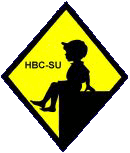
Figure 1.--Here we see an unidentified mission school somewhere in Angola duringn 1955. The fathers have provided a smock-like uniform for the children. |

|
The Portuguese reached Angola in the 15th century as they sailed south along the Atlantic coast seeking a sea route to India and China. They established trading posts, but did not begin to colonize the interior until the 19th century. It was thus the Portuguese that established the first schools. This did not begin to any extent until the 19th century. The language of instruction was Portuguese. There were separate schools for the Portuguese and the African population. African access to educational was very limited for most of the Portuguese colonial period. Schools fun by the government were limited and mostly confined to the cities. The Government did finance schools for the Portuguese, but schools for the Africans population were mostly left to Roman Catholic and Protestant missionaries. Each of the missions established its own school system, although all were subject to minimal government supervision. There was limited supervision by Portuguese authorities except for how political issues were addressed. Portuguese authorities began giving more attention to African education (1960s). Not only was primary education limited, but secondary education was available to almost no Africans before 1960. But even after 1960 there were relatively few Africans in secondary schools. Primary attendance was, however, growing. The schooling was in Portuguese and much of the African population did not speak Portuguese. The primary program consisted of only four years in two 2-year cycles. This meant most of the children finishing primary school had only a very basic level of literacy. No data is available on the number of children that began primary school and it is believed that many children did not complete the full program, probably less than half of those who began. The same is true of those who began secondary school. The quality of teaching was low. The teachers in the African schools were mostly Africans with only minimal qualifications. The secondary teachers were Portuguese. The beginning years of secondary school were devoted to materials at the primary level meaning 5th-6th grade in the American system. The Portuguese attention to education began at about the same time that the independence movement began to develop. At the time African illiteracy was very high, probably about 85 percent. Efforts to expand the education in the countryside were disrupted by the violence as the independence movement gained strength. , he development of a modern education was limited, first by the independence war and than the civil war between rival groups that fought for independence.
Related Chronolgy Pages in the Boys' Historical Web Site
[The 1880s]
[The 1890s]
[The 1900s]
[The 1910s]
[The 1920s]
[The 1930s]
[The 1940s]
[The 1930s]
[The 1940s]
[The 1950s]
[The 1960s]
[The 1970s]
[The 1980s]
Related Style Pages in the Boys' Historical Web Site
[Long pants suits]
[Knicker suits]
[Short pants suits]
[Socks]
[Eton suits]
[Jacket and trousers]
[Blazer]
[School sandals]
[School smocks]
[Sailor suits]
[Pinafores]
[Long stockings]
Navigate the HBC School Section:
[Return to the Main Angolan education page]
[Return to the Main African school uniform country page]
[Return to the Main Angolan page]
[About Us]
[Activities]
[Chronology]
[Clothing styles]
[Countries]
[Debate]
[Economics]
[Garment]
[Gender]
[Hair]
[History]
[Home trends]
[Literary characters]
[School types]
[Significance]
[Transport and travel
[Uniform regulations]
[Year level]
[Other topics]
[Images]
[Links]
[Registration]
[Search]
[Tools]
[Return to the Historic Boys' School Home]
